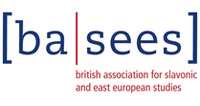Authors
Nikolay Sarkisyan1; 1 University of Oxford, UK Discussion
Ongoing discussions in historiography regarding Stalinism revolve around attempts to understand whether Stalinism represented a "Great Retreat," essentially the same Bolshevism but achieving its goals through different methods, or if this phenomenon marked a decisive break from the previous revolutionary phase. In this presentation, I aim to contribute to these discussions by reinvigorating Soviet Marxist non-Stalinist thought (particularly D. Lukács and M. Lifshitz) and referring to other neo-Marxist thought of the era (H. Marcuse) to define Stalinist doctrine as a distinct method of thinking. I will do this through the lens of the evolution of the State Museum of Revolution in Petrograd-Leningrad during the 1920-1930s. I will explore how this method of thinking manifested (or was reflected) in the museum's transformation, the alteration of exhibits, collections, and the shift in thematic focuses. Established in 1919 and rooted in the revolutionary tradition, the museum was declared a "museum of populism" in 1935 and underwent a severe restructuring. The dynamics of this restructuring, coupled with criticisms from authoritative bodies, shed light on the intricacies of Stalinist historical thought. These changes were distinctly aligned with a generational shift in personnel. This dynamic embodies the essence of Stalinism in a condensed form - it represented a negation of the revolution on several fundamental points, yet it emerged from it and could not renounce it, thereby retaining formally revolutionary features. The history of the revolutionary movement was absorbed and reduced to a leader-centric (pinpointing mythologized figures of Lenin, Stalin, Kirov, among others) conception of history, intensifying in the museum throughout the 1930s. At the same time, it was dissected and subjected to vivisection, and individual elements, albeit embedded in a simplified context, continued to be associated with subversiveness, ultimately defining a certain complexity intrinsic to Stalinist Reason. This raises questions regarding the depth of Stalinism, its roots, and the validity of tracing a singular line from Lenin, conditionally, to Stalin. The dynamics within the State Museum of Revolution indicate a series of significant breaks, underscoring the necessity to discern the very concepts of Bolshevism, Stalinism, revolution, and counterrevolution. 
